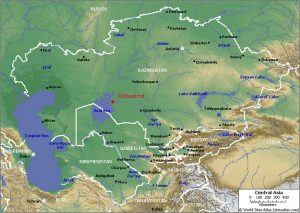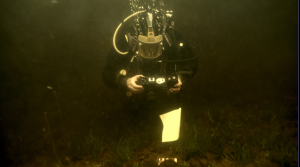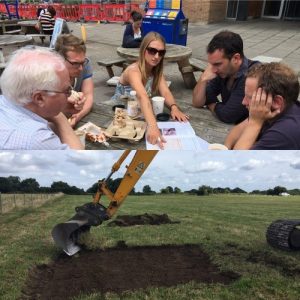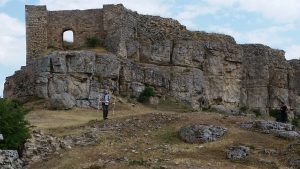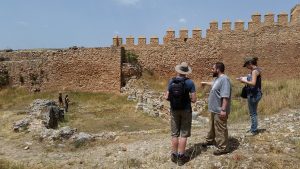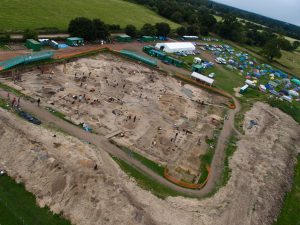To mark International Women’s Day this year, we asked some of our brilliant staff to answer a few questions about their research, their career highlights, and their inspirations. Read on for a selection…
 Ms Elaine Jamieson
Ms Elaine Jamieson
Research/teaching specialisation
I am interested in inter-disciplinary approaches to landscape archaeology, with a particular specialism in analytical earthwork survey. Although I have worked on sites of all periods, my current research is focussed on the archaeology of medieval monuments and landscapes.
What made you choose this area?
As a student I did my first archaeological survey work on Exmoor with the Royal Commission on the Historical Monuments of England, and found myself tramping across the open moor surveying everything from prehistoric cists to post-medieval industrial sites. That experience shaped my future career and left me with a love of landscape archaeology.
Was there a moment when you realised that you had become successful academic / research staff?
When my first monograph was published.
What is an exciting development currently in your area?
I am currently working on the Leverhulme Trust funded project Extending Histories: From Medieval Mottes to Prehistoric Round Mounds. The recent discovery by the project team that Skipsea Castle motte may have its origins in the middle Iron Age raises interesting questions about the composite nature of medieval castles, as well as contemporary perceptions of ancient places and landscapes.
What advice would you have for young women wanting to become involved in this area?
If you have keen observation skills and an inquisitive mind then landscape archaeology, particularly non-intrusive survey and investigation work, can be a really rewarding area of study. I would say just get out there and start exploring the landscape around you!
What do you enjoy doing in your spare time?
I enjoy spending time outdoors, watching rugby union and relaxing at home.
Who inspired you to get to where you are now?
The many wonderful landscape archaeologists I have worked with over the years, but particularly Paul Everson who first sparked my interest in medieval landscapes.
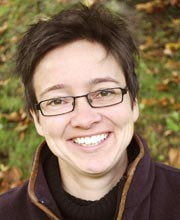 Dr Hella Eckardt
Dr Hella Eckardt
Research/teaching specialisation:
Roman Archaeology
What made you choose this area?
I studied Latin at school and read books about what life in ancient Rome would have been like – but really wanted to see for myself how ordinary people lived.
Was there a moment when you realised that you had become successful academic / research staff?
Securing a permanent job!
What is an exciting development currently in your area?
I have loved having so many Roman PhDs in the department and within Roman archaeology generally there has been a real resurgence in artefact studies.
What advice would you have for young women wanting to become involved in this area?
My advice would be the same for men or women: this is a brilliant job – but it is important not to take on all the competing demands and targets – or you will simply not have a life!
What do you enjoy doing in your spare time?
Gardening and spinning (cycling, not textile working).
Who inspired you to get to where you are now?
My parents were very influential – they actually met on an excavation and both had a deep interest in history.
 Dr Wendy Matthews
Dr Wendy Matthews
Research/teaching specialisation
Origins of early agricultural and urban lifeways/microscopic analysis of building and settlement histories and the ecological and social strategies and relations and lives that shaped them.
What made you choose this area?
My love of the Middle East and the powerful forensic-scale insights that micromorphological analyses provide into study of the lived histories of past peoples and environments.
Was there a moment when you realised that you had become successful academic / research staff?
As we are always learning and there are always new discoveries and ways of looking at things, there always seems to be more to strive for!
What is an exciting development currently in your area?
New high-resolution integrated archaeobotanical studies of the diverse plants used in the past and their ecological and social significance.
What advice would you have for young women wanting to become involved in this area?
Engage in current exciting interdisciplinary research and partnerships and link your research to meaningful past, present and future global challenges.
What do you enjoy doing in your spare time?
Walking in the country, kayaking, art, and many years ago – windsurfing and horse-riding.
Who inspired you to get to where you are now?
Professor Nicholas Postgate, University of Cambridge and Dr Marie-Agnès Courty, CNRS
 Dr Catherine Barnett
Dr Catherine Barnett
Research/teaching specialisation
The practical application of Archaeological Sciences (in my case archaeobotany, geoarchaeology and dating) to sites of all ages
What made you choose this area?
It was a natural progression from a background in environmental sciences coupled with a real curiosity about our shared past. I first contemplated a career in forensic biochemistry but archaeological science struck me as just as much an exercise in detection and a lot less messy.
Was there a moment when you realised that you had become successful academic / research staff?
One of my most nerve-wracking days was giving a talk at the Palaeolithic-Mesolithic day conference at the British Museum while first working as a sessional lecturer and doing my PhD. To my surprise, I did not go up in a big ball of flames but instead vastly more experienced and well-known colleagues from the profession showed a genuine interest in what I was doing and talked to me at length after the talk. I’d found my people!
What is an exciting development currently in your area?
The systematic application of AMS radiocarbon dating to well-stratified remains associated with prehistoric sites is profoundly changing our understanding of the timing and nature of developments in human adaptations to rapid climate change and in securing food supplies in an evolving landscape.
What advice would you have for young women wanting to become involved in this area?
Be curious and get as much experience as you can on digs or volunteering in the lab. Personally I’ve found the science side a great way into archaeology, and there are many possible careers within the subject.
What do you enjoy doing in your spare time?
Spare what? I love spending time with my herd of little boys and prowling the landscape with friends and dogs. I won’t deny visiting archaeological sites and museums on my days off too.
Who inspired you to get to where you are now?
My parents, both of them scientists in different fields showed me there is no limit to what any of us can do but it was a series of kind and enthused university lecturers who gently steered me in the right direction to get where I wanted to be.
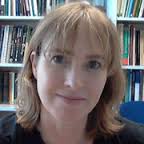 Dr Mary Lewis
Dr Mary Lewis
Research/teaching specialisation
Child bioarchaeology/human osteology
What made you choose this area?
My love of history, biology and medicine
Was there a moment when you realised that you had become successful academic / research staff?
Do you ever? But it was exciting the first time one of my papers was cited!
What is an exciting development currently in your area?
The use of stable isotopes to enable us to ask detailed questions about people’s diet, health and migration patterns, it has completely transformed the discipline.
What advice would you have for young women wanting to become involved in this area?
Be persistent, it takes time but opportunities do come available. Be prepared to work your way up.
What do you enjoy doing in your spare time?
Gardening, walking the dog and running
Who inspired you to get to where you are now?
A female bioarchaeologist who was an amazing and generous mentor. Still is.
 Matthew Jacobson is a current PhD student researching climate change and socio-economic transformations in the Late Antiquity of the Middle East. Read on to find out what he got up to over the summer…
Matthew Jacobson is a current PhD student researching climate change and socio-economic transformations in the Late Antiquity of the Middle East. Read on to find out what he got up to over the summer…



